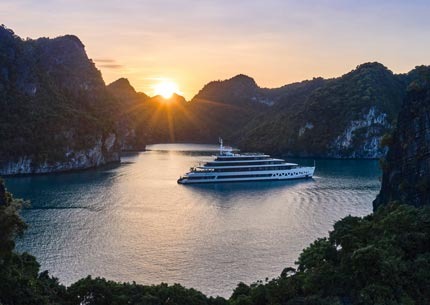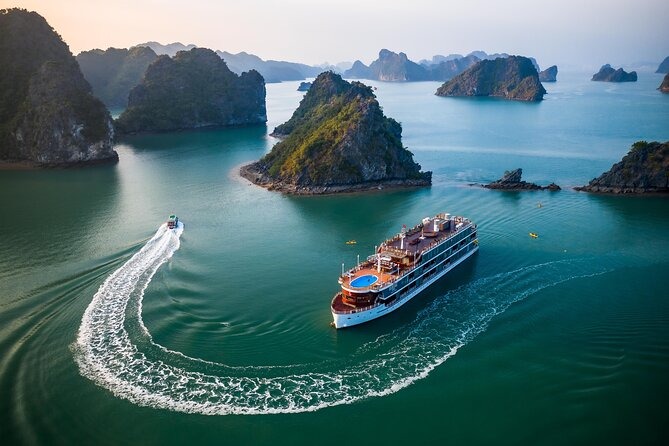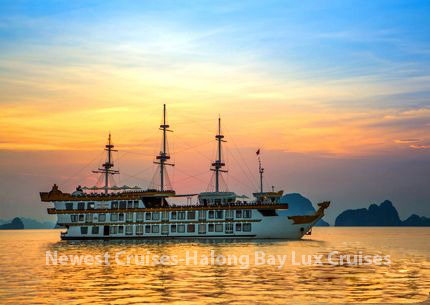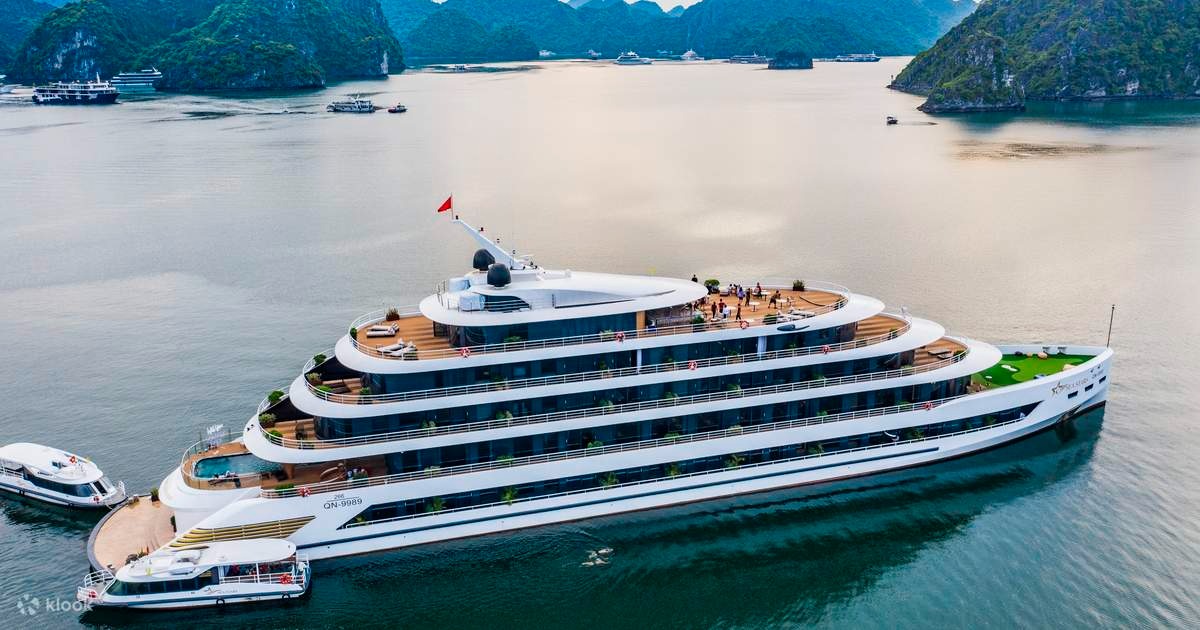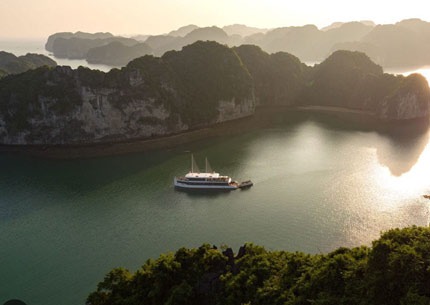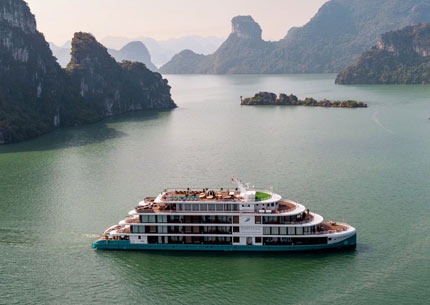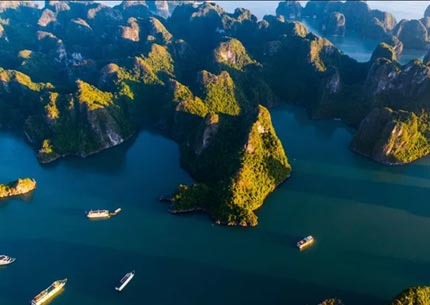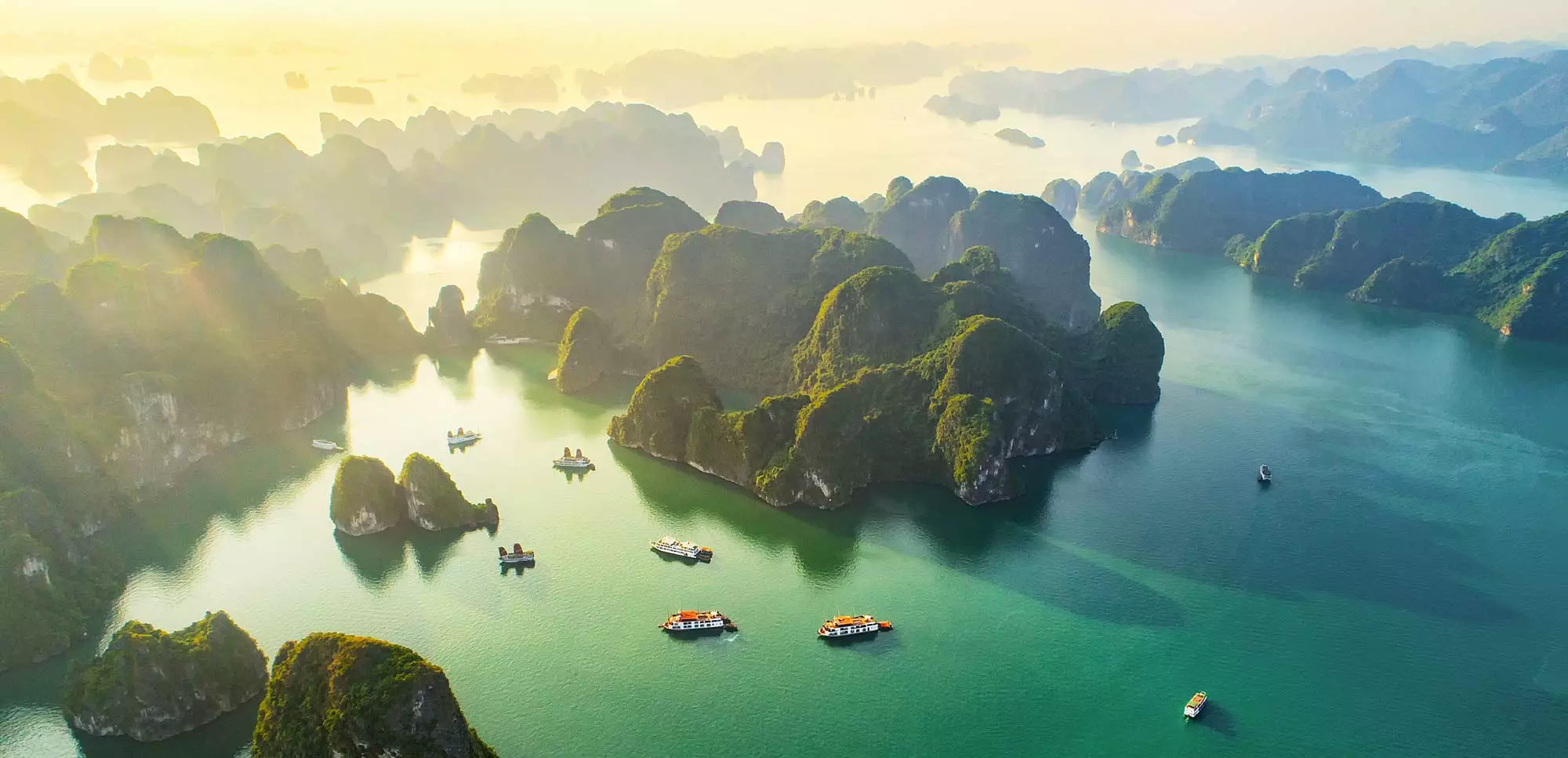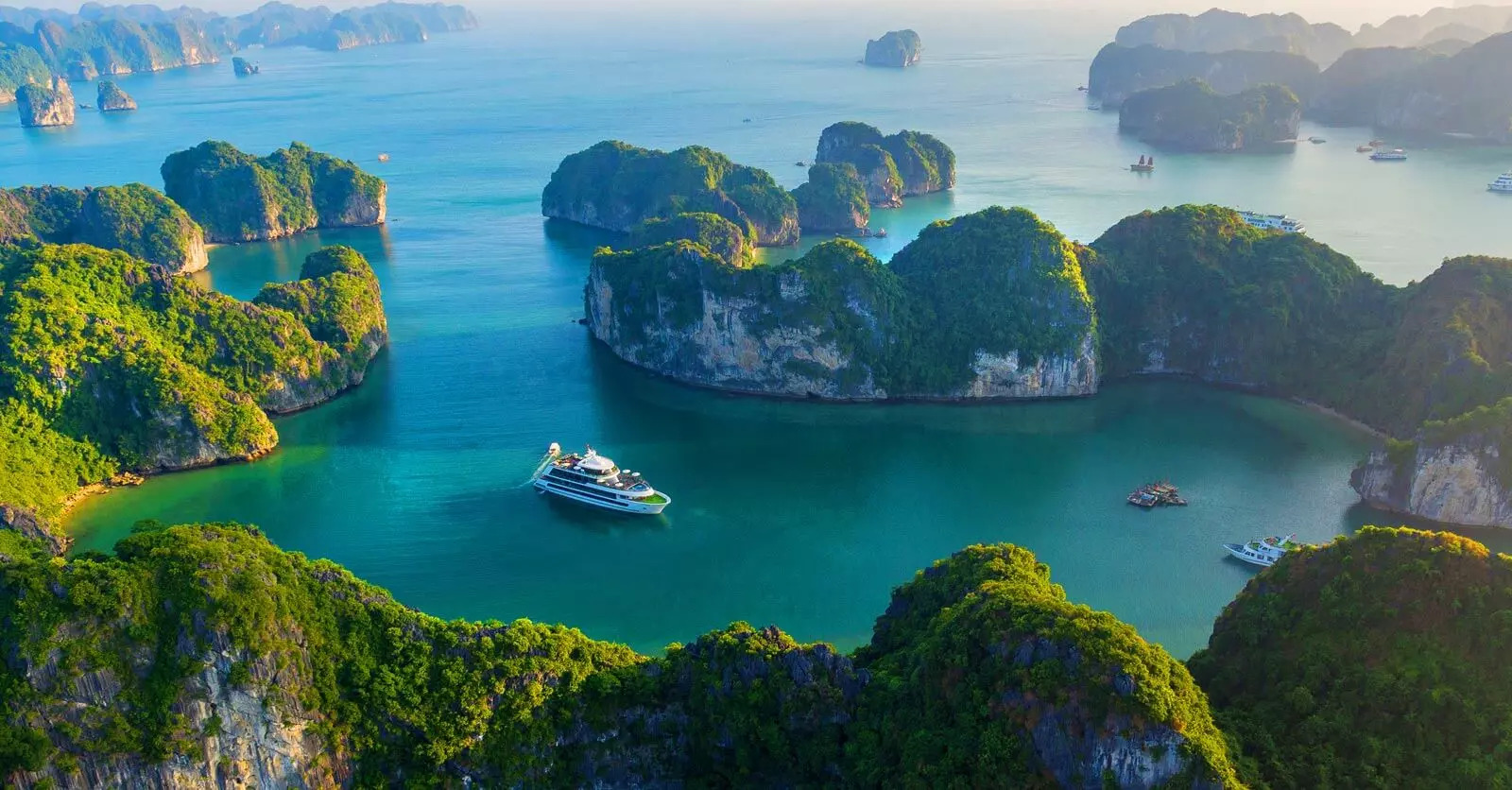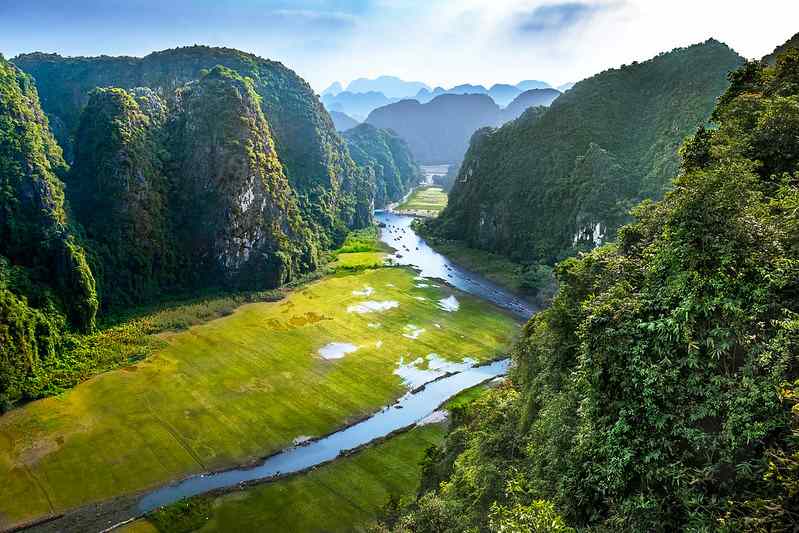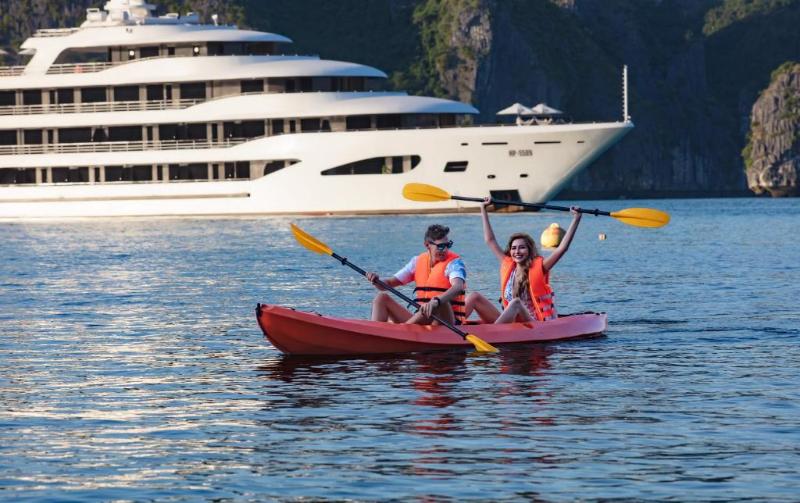27 Must-Try Things to Do in North Vietnam in 2025-2027
Embark on a journey through Northern Vietnam’s stunning landscapes and rich cultures with our comprehensive guide to 27 unforgettable experiences. From luxurious Halong Bay cruises to hidden mountain treasures, this article covers everything you need to plan your perfect adventure in this captivating region for 2025-2027.
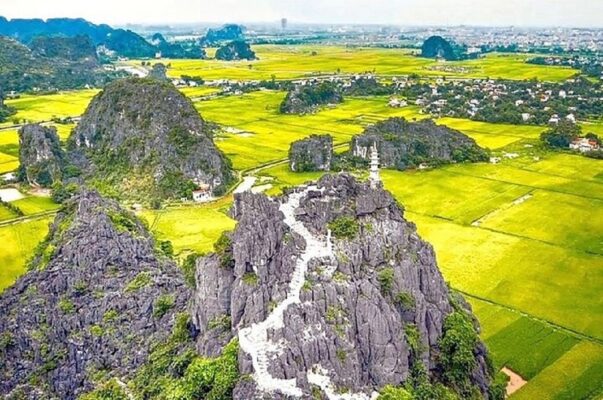
Introduction: Unveiling North Vietnam’s Treasures and Things to Do in North Vietnam
North Vietnam stands as a testament to nature’s artistry and human resilience. This enchanting region captivates travelers with its dramatic limestone karsts, emerald rice terraces, and vibrant ethnic cultures that have thrived for centuries. As tourism evolves post-pandemic, North Vietnam’s appeal only grows stronger, offering authentic experiences that connect visitors with both breathtaking landscapes and warm-hearted locals.
Whether you’re drafting your first Vietnamese adventure or returning to explore deeper, the northern provinces offer remarkable diversity within relatively compact geography. Our comprehensive guide highlights 27 exceptional experiences curated for 2025-2027, reflecting the latest travel trends, improved infrastructure, and emerging destinations that promise to create lasting memories.
Let’s embark on this journey through North Vietnam’s most magnificent offerings, from world-renowned UNESCO sites to hidden gems only locals know about.

1. Cruise Through Halong Bay’s Limestone Labyrinth
Halong Bay remains North Vietnam’s crown jewel, where over 1,600 limestone islands and islets create a seascape of unparalleled beauty across 1,553 square kilometers. The UNESCO World Heritage Site has evolved its offerings significantly for 2025, with luxury cruises providing the ultimate way to experience this natural wonder.
Halong Bay Lux Cruises offers premium 5-star vessels featuring private balconies, gourmet dining, and curated excursions that avoid the more crowded areas. The newest fleet additions include enhanced sustainability practices with solar power supplements and plastic-free initiatives while maintaining luxurious amenities.
Don’t miss: Sunrise tai chi sessions on deck, kayaking through hidden lagoons like the 300-meter-long Luon Cave, and visiting floating fishing villages such as Cua Van, home to approximately 200 families who maintain traditional lifestyles.
For the ultimate experience, book a minimum 2-day journey to fully appreciate the bay’s changing moods from dawn to dusk. The 2-Day Halong-Lan Ha Bay 5-Star Cruise offers an ideal balance of relaxation and exploration with exclusive access to less-visited sections of the bay.
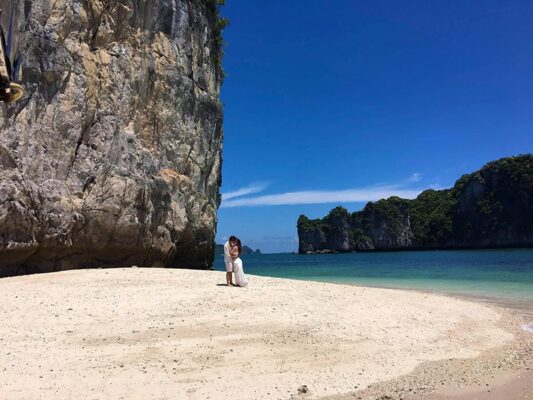
2. Uncover Sapa’s Ethnic Diversity and Mountain Majesty
Nestled at 1,600 meters above sea level in the Hoàng Liên Son Mountains, Sapa has transformed from a sleepy hill station to a premier cultural destination. The region is home to eight distinct ethnic groups, including H’mong, Red Dao, and Tay peoples, each maintaining unique traditions and crafts.
Trek Through Muong Hoa Valley’s Terraced Fields
The 22-kilometer stretch of terraced rice fields in Muong Hoa Valley ranks among Asia’s most photogenic agricultural landscapes. These centuries-old terraces, covering approximately 2,200 hectares, change colors dramatically with seasons—emerald green during June-August and golden yellow during September-October harvest.
Guided treks ranging from 6-15 kilometers take you through villages like Ta Van and Lao Chai, where you’ll witness farming techniques unchanged for generations. Local guides from ethnic communities offer insider knowledge about cultivation practices and cultural significance of the terraces.
Conquer Mount Fansipan via Cable Car or Trek
As Indochina’s highest peak at 3,143 meters, Mount Fansipan (appropriately nicknamed “The Roof of Indochina”) offers two distinct experiences. The Guinness Record-holding cable car covers 6.2 kilometers in just 15 minutes, rising 1,410 meters to a viewing complex featuring ornate Buddhist temples and panoramic platforms.
For adventurous travelers, the 2-day guided trek traverses dense bamboo forests and alpine meadows. The trail covers 11.2 kilometers with a 1,920-meter elevation gain, providing encounters with over 2,000 plant species and rare wildlife including the red-shanked douc langur.
3. Navigate Hanoi’s Ancient Quarters and Modern Energy
Vietnam’s thousand-year-old capital blends colonial architecture, ancient temples, and contemporary Vietnamese culture into a captivating urban experience. The city’s distinct charm lies in its walkable neighborhoods and vibrant street life.
Wander the 36 Streets of the Old Quarter
Hanoi’s historic heart comprises 36 guild streets named for the trades once practiced there—Hang Bac (silver), Hang Gai (silk), and Hang Mam (fish sauce) among them. The narrow streets, some barely 2 meters wide, house buildings dating back to the 15th century alongside trendy cafes and boutiques.
A guided walking tour reveals architectural details often missed: ancient tube houses (some just 2 meters wide but extending 60-70 meters deep), French colonial influences, and hidden communal houses like Bach Ma Temple, which dates to 1010 CE and occupies just 360 square meters within the bustling district.
Sample Northern Vietnam’s Distinctive Cuisine
Hanoi’s culinary scene epitomizes Northern Vietnamese cuisine’s subtle flavors and Chinese influences. Beyond the famous pho (beef noodle soup), discover regional specialties through guided food tours or cooking classes.
Must-try dishes include:
- Bun Cha Hanoi – Grilled pork served with rice noodles and herb basket (famously enjoyed by Anthony Bourdain and President Obama at Bun Cha Huong Lien)
- Cha Ca La Vong – Turmeric-marinated fish with dill and green onions, a 130-year-old recipe from the restaurant of the same name
- Egg Coffee (Ca Phe Trung) – A velvety creation of whipped egg yolk and condensed milk atop robust Vietnamese coffee, pioneered at Giang Cafe in 1946
4. Trek the Ha Giang Loop’s Dramatic Mountain Passes
The remote northeastern province of Ha Giang offers Vietnam’s most spectacular mountain landscape across a 350-kilometer loop route. Once virtually unknown to international travelers, this region now represents the ultimate road trip adventure while remaining authentically Vietnamese.
The limestone plateau has created a unique karst landscape with sheer cliffs rising 800-1,200 meters from valley floors. The most breathtaking section is Ma Pi Leng Pass—a 20-kilometer road carved into near-vertical mountainsides, reaching heights of 1,500 meters with panoramic views of the Nho Que River’s turquoise waters 800 meters below.
For 2025-2027: New viewpoints have been developed along the route, and improved homestay networks allow for comfortable 3-5 day journeys. While motorcycle rentals remain popular (150-250cc bikes recommended), electric motorcycle options have emerged as a more sustainable alternative.
Local interactions: The loop passes through territories of 17 different ethnic minorities, including the Hmong, Dao, Lo Lo, and Tay peoples. Sunday markets at Dong Van and Meo Vac showcase traditional crafts, agricultural products, and medicinal herbs gathered from the surrounding mountains.
5. Discover Ninh Binh’s “Inland Halong Bay” Landscapes
Just 100 kilometers south of Hanoi, Ninh Binh province offers scenery equally stunning as Halong Bay but set amidst rice fields rather than seawater. Limestone karsts rising dramatically from flat paddies create a landscape often called “Halong Bay on land.”
Cruise the Waterways of Tam Coc and Trang An
The UNESCO-listed Trang An Landscape Complex features a 12-kilometer network of waterways winding through caves, temples, and valleys. Traditional sampan boats, rowed by local guides (often using their feet rather than hands), navigate through 48 caves including Hang Mua, which extends 250 meters through a mountain.
Tam Coc offers a similar but distinct experience with three caves along the Ngo Dong River and iconic scenes of limestone peaks surrounded by golden rice fields (best viewed September-October). The boat journey covers 7.5 kilometers round-trip and passes under natural limestone bridges as low as 2 meters during high water seasons.
Climb Mua Cave Viewpoint for Panoramic Vistas
For the most photographed view in Ninh Binh, climb the 500 stone steps to Hang Mua peak. The panoramic viewpoint reveals the serpentine Ngo Dong River winding between karst mountains and rice fields—a vista that changes dramatically with seasons, from vibrant green in summer to golden yellow during harvest.
The summit features a dragon sculpture inspired by Vietnamese mythology and offers unobstructed views extending over 15 kilometers on clear days. Arrive for sunrise (around 5:30 AM) to avoid crowds and capture the landscape bathed in golden light.
6. Experience the Cultural Richness of Bac Ha Sunday Market
Every Sunday from 6 AM to noon, the remote town of Bac Ha hosts the largest ethnic minority market in Northern Vietnam. Located 76 kilometers from Lao Cai city, this vibrant gathering draws approximately 5,000-8,000 people from eight ethnic groups—primarily Flower Hmong, distinguished by their extraordinarily colorful attire.
The 3-hectare marketplace divides into specialized sections: livestock (where horses, water buffaloes, and pigs are traded), textiles featuring hand-embroidered fabrics and indigo-dyed hemp cloth, agricultural products, and food stalls serving regional specialties like thang co (horse meat soup) and corn wine (averaging 45-50% alcohol content).
Photography tip: The most vibrant scenes occur between 8-10 AM when ethnic minority women in full traditional dress congregate to socialize. Ask permission before photographing individuals, and consider purchasing small items as a gesture of appreciation.
Getting there: For 2025, improved road conditions have reduced travel time from Sapa to approximately 1.5 hours, making this an accessible day trip. Alternatively, combine with a visit to Can Cau Market (Saturdays) and Coc Ly Market (Tuesdays) for an immersive multi-day market experience.
7. Explore Ba Be National Park’s Pristine Lakes and Caves
Established in 1992, Ba Be National Park centers around Vietnam’s largest natural freshwater lake—a 500-hectare body of water surrounded by limestone mountains reaching 1,554 meters. The park’s biodiversity includes 1,268 plant species and 553 animal species, with several endemic to this region.
The three-section lake reaches depths of 29 meters and contains 23 small islands. Traditional wooden boats captained by local Tay people offer half-day or full-day explorations, including visits to:
- Puong Cave – A 300-meter limestone cave with a ceiling rising 30 meters, home to 18 bat species and featuring dramatic stalactite formations
- Dau Dang Waterfall – A three-tiered cascade with a 1,000-cubic-meter-per-minute flow rate during rainy season
- Widow’s Island – A tiny 3,000-square-meter islet with a tragic love story dating to the 16th century
For 2025-2027, new community-based tourism initiatives offer authentic homestays in traditional Tay stilt houses in villages like Pac Ngoi and Bo Lu. These accommodations feature hand-hewn wooden architecture with homes elevated 1.5-2 meters above ground and provide home-cooked meals featuring local specialties like bamboo-tube rice and stream fish.
8. Photograph the Golden Terraces of Mu Cang Chai
In northwestern Yen Bai province, the Hmong people have transformed steep mountainsides into some of Asia’s most spectacular rice terraces. These agricultural masterpieces cover 2,200 hectares across three communes—La Pan Tan, Che Cu Nha, and De Xu Phinh—with some terraces dating back over 300 years.
Capture the Changing Seasons of Rice Cultivation
Mu Cang Chai’s terraces transform dramatically throughout the year:
- Late May/early June – Water season when terraces become mirrors reflecting the sky
- July/August – Bright green rice plants create emerald cascades
- September/October – Golden harvest season when terraces turn amber and yellow
The prime photography locations include:
- Khau Pha Pass – A 1,200-meter-high mountain pass offering aerial perspectives across valleys with terraces extending to the horizon
- La Pan Tan village – Home to the “rice terraces in the clouds” at 1,000 meters elevation
- Mam Xoi Hill – The “tray of sticky rice” viewpoint featuring perfectly symmetrical terraced fields
Participate in Harvest Festivities and Cultural Events
For 2025, Mu Cang Chai’s Terraced Field Festival (September 20-25) includes paragliding experiences over the golden fields, traditional Hmong dance performances, and hands-on rice harvesting alongside local farmers. New observation decks installed at strategic points allow visitors to capture panoramic photographs without disturbing the agricultural activities.
9. Witness the Historic Significance of Dien Bien Phu
The remote northwestern city of Dien Bien Phu marked the decisive 1954 battle ending French colonial rule in Indochina. Today, the battlefield has been preserved as an open-air museum across approximately 20 square kilometers, providing crucial historical context for understanding modern Vietnam.
Key sites include:
- A1 Hill (Eliane 2) – The battle’s most fiercely contested position, featuring preserved trenches and the actual crater from the decisive explosion that helped end the siege
- Command Bunker of General de Castries – The 20-square-meter underground bunker where the French commander directed operations, now restored with original artifacts
- Dien Bien Phu Victory Museum – Housing 1,000+ exhibits including weapons, maps, and personal items from both Vietnamese and French forces
The city hosts commemorative events around May 7 each year (marking the battle’s end), with special expanded celebrations planned for 2025 as part of broader national independence commemorations.
10. Trek Through Pristine Pu Luong Nature Reserve
Located 160 kilometers southwest of Hanoi, Pu Luong Nature Reserve encompasses 17,660 hectares of limestone landscape and tropical forests. The reserve protects remarkable biodiversity, including 1,109 plant species and 259 animal species—among them 55 listed in Vietnam’s Red Book of endangered species.
Hike Between Traditional Thai and Muong Villages
Pu Luong’s landscape is shaped by Thai and Muong stilt houses and sustainable farming suited to the mountains. Multi-day treks link villages like Kho Muong, Don, and Hieu through rice terraces and bamboo forests.
The top trek spans 15 km from Ban Hieu to Ban Nua, crossing suspension bridges and giant 4-meter water wheels. These wooden wheels, driven by stream current, lift water to irrigate hillside rice fields—an age-old local innovation.
Stay in Eco-Lodges Overlooking Rice Valleys
From 2025 to 2027, Pu Luong offers upgraded stays—from authentic homestays to eco-lodges built with traditional methods. These lodgings provide stunning valley views and use solar power, rainwater harvesting, and waste reduction to stay eco-friendly.
Activities include bamboo rafting on the Cham River, cooking classes with local ingredients, and wildlife tours to spot flying squirrels, civets, and 40+ bird species.
11. Marvel at Ban Gioc Waterfall’s Transboundary Beauty
Ban Gioc Waterfall, straddling the Vietnam-China border in Cao Bang province, ranks as Southeast Asia’s largest natural waterfall and one of Vietnam’s most impressive natural wonders. The falls extend 300 meters across the Quay Son River, dropping 30 meters in a three-tiered cascade surrounded by karst mountains.
The waterfall’s flow varies dramatically by season:
- Dry season (November-April) – Flow rate of approximately 2.5-3 million cubic meters per day
- Rainy season (May-October) – Peak flow reaching 7-8 million cubic meters per day
Visitors can explore the falls from multiple vantage points, including bamboo rafts that approach the base of the cascades—a unique perspective allowing you to feel the mist and thundering power up close. The surrounding area features Nguom Ngao Cave, a 2,144-meter limestone cavern with chambers reaching heights of 60 meters and spectacular stalactite formations.
For 2025: The area’s infrastructure continues to improve with new viewing platforms and a visitor center featuring exhibits on the region’s geological formation and the Tay ethnic group who have inhabited this valley for centuries.
12. Step Back in Time at Duong Lam Ancient Village
Just 45 kilometers west of Hanoi, Duong Lam Ancient Village preserves Vietnam’s traditional rural architecture within its 9-square-kilometer area. This remarkably intact historic settlement features 956 traditional houses, some dating back over 400 years.
The village’s distinctive architecture includes:
- Laterite brick construction – Buildings made from locally quarried reddish-brown laterite stone
- Entrance gates – Ornate family gates with traditional Vietnamese motifs
- Communal houses – Ancient community gathering spaces with intricate wood carvings
The village layout follows traditional feng shui principles, with five hamlets arranged to represent harmony with the natural environment. The oldest structures include Mong Phu Communal House (built in 1638) and the temples dedicated to Phung Hung and Ngo Quyen—two national heroes born in the village.
Visitors can arrange half-day cooking classes in 300-year-old homes, learning to prepare dishes like cha lua (traditional pork sausage) and caramelized fish in clay pots using methods passed down through generations.
13. Indulge in Northern Vietnam’s Distinctive Cuisine
Northern Vietnamese cuisine distinguishes itself through subtle flavors, complex broths, and Chinese-influenced techniques adapted to local ingredients. The region’s cooler climate produces dishes noticeably different from central and southern Vietnamese cooking.
Master Northern Specialties in Cooking Classes
Hands-on cooking classes in Hanoi and rural villages provide insight into Northern Vietnamese culinary techniques. Most classes begin with market tours, teaching participants how to select crucial ingredients like Vietnamese cinnamon from Yen Bai province (containing 5-8% essential oil compared to 1-2% in standard cinnamon) or the specific black cardamom variety from Ha Giang that gives pho its distinctive aroma.
Popular cooking class options include:
- Highway 4 Restaurant – Specializing in mountainous minority cuisines
- Hidden Hanoi – Traditional Hanoian home-cooking in a French colonial villa
- Red Bridge Cooking School – Market-to-table classes focusing on northern herbs and vegetables
Explore Regional Variations and Street Food
Each northern province offers distinctive specialties worth seeking out:
- Cao Bang: Banh Cuon (steamed rice rolls with minced pork filling)
- Hai Duong: Banh Dau Xanh (mung bean cakes made using a 300-year-old technique)
- Lang Son: Vit Quay Lang Son (roast duck with seven-herb marinade)
- Nam Dinh: Pho Nam Dinh (the original beef noodle soup with wider noodles than Hanoi-style)
For 2025-2027, new food tour options include specialized routes exploring regional dishes across multiple northern provinces, with expert guides explaining historical and cultural contexts behind each specialty.
14. Venture to Ba Vi National Park’s Three-Peaked Mountain
Located 60 kilometers west of Hanoi, Ba Vi National Park centers around a three-peaked mountain rising dramatically to 1,296 meters. The park covers 10,815 hectares and features distinctly different ecological zones at various elevations, creating a microclimate 3-5°C cooler than surrounding areas.
The mountain’s three peaks are named for different deities:
- Tan Vien Peak (1,226 meters) – Dedicated to the Mountain God
- Ngoc Hoa Peak (1,131 meters) – Named for the Mountain God’s wife
- Emperor Peak (1,296 meters) – The highest summit with remnants of a French colonial hill station
The park contains over 1,200 plant species, including rare medicinal herbs, and 812 animal species. Hiking trails range from easy 1-2 hour walks to challenging full-day treks. The most popular route ascends to the French colonial church ruins at 800 meters elevation, offering views extending over 50 kilometers on clear days.
For 2025, the park has introduced guided night hiking experiences allowing visitors to observe nocturnal wildlife and enjoy stargazing from mountain viewpoints far from city light pollution.
15. Experience the Tranquility of Tam Dao Hill Station
Tam Dao sits at 900 meters high, just 80 km from Hanoi. Founded as a French hill station in 1907, it still features stone churches and villas among pine forests. The town stays 5–8°C cooler than the lowlands year-round.
Key attractions include:
- Tam Dao National Park – 36,883 hectares protecting 490 animal species and 1,436 plant species
- Silver Waterfall – A 50-meter cascade accessible via a 3-kilometer forest trail
- Tam Dao Stone Church – Built in 1906 with Gothic architecture featuring remarkable stained glass
For 2025-2027, new hiking trails have been developed to connect with ethnic Dao and San Diu villages in the surrounding mountains, offering cultural immersion opportunities alongside natural beauty. The area’s microclimate creates fascinating foggy landscapes approximately 140 days per year, especially during early mornings between September and November.
16. Discover the Pottery Traditions of Bat Trang Village
Located 13 kilometers southeast of Hanoi, Bat Trang has maintained ceramic production traditions for over 700 years. The village spans 60 hectares with approximately 1,000 households still engaged in pottery production, creating everything from everyday tableware to sophisticated art pieces.
16.1 Try Your Hand at Traditional Pottery Making
Interactive workshops allow visitors to experience the complete ceramic production process. Under guidance from artisans whose families have practiced these techniques for generations, you can:
- Create pieces using traditional kick-wheels
- Learn decorative painting techniques using natural mineral pigments
- Observe kiln firing methods that reach temperatures of 1,200-1,300°C
The village’s ceramic museum displays artifacts dating back to the 14th century, demonstrating how designs have evolved while maintaining distinctive regional characteristics like the “crackle glaze” effect created through controlled cooling processes.
16.2 Shop for Authentic Handicrafts and Meet Artisans
Bat Trang’s pottery streets feature hundreds of workshops selling directly to the public. Products range from affordable everyday items to museum-quality pieces commanding prices up to several thousand dollars.
For 2025, several master artisans have opened their private studios for pre-arranged visits, offering insights into the highest levels of craftsmanship including the creation of ceremonial pieces that may require months to complete.
17. Wander the Colonial Hill Station of Sapa Town
While most visitors focus on Sapa’s surrounding villages and landscapes, the town itself merits exploration for its fascinating architectural heritage. Established by the French in 1922 as a summer retreat, Sapa town sits at 1,600 meters elevation with buildings designed to withstand the mountainous climate while creating a European ambiance.
Noteworthy sites include:
- The Stone Church – Built in 1895, this Gothic-style structure features distinctive local stone and stained glass
- Former French Governor’s Residence – Now housing the Sapa Museum with exhibits on local ethnic cultures
- Sapa Central Square – The social hub where ethnic minority vendors gather each morning
For 2025, new heritage walking tours highlight the town’s architectural evolution from colonial outpost to modern tourist destination, with knowledgeable guides explaining how buildings blend French, Vietnamese, and ethnic minority design elements.
A comprehensive Sapa-Halong Bay 5-Day Tour offers the perfect combination of mountain and coastal experiences, allowing you to experience both of North Vietnam’s most iconic landscapes in one seamless journey.
18. Kayak Through Lan Ha Bay’s Hidden Lagoons
Adjacent to Halong Bay but far less visited, Lan Ha Bay features 300+ limestone islands across a 7,000-hectare seascape. Unlike its famous neighbor, Lan Ha boasts numerous white sand beaches tucked between karst formations, perfect for kayaking adventures and swimming breaks.
The bay’s most remarkable features include:
- Van Boi Beach – A 700-meter stretch of pristine sand accessible only by boat
- Dark & Bright Cave – A tunnel cave system leading to a completely enclosed lagoon
- Tung Gau Cave – An impressive 150-meter cavern with ancient stalactites
Kayaking routes range from easy 1-hour paddling excursions to full-day explorations, with experienced guides navigating through narrow passages that larger boats cannot access. The clear waters reveal diverse marine life, including blue spotted rays, parrotfish, and occasional dolphin sightings.
The area maintains ecological health thanks to conservation efforts initiated in 2017, including strict regulations on tourist numbers and waste management. For 2025-2027, new “voluntourism” options allow visitors to participate in beach cleanups and coral restoration projects.
19. Trek to Remote Waterfalls in Hoang Su Phi
Located in Ha Giang province, Hoang Su Phi district features some of North Vietnam’s most spectacular—yet least visited—waterfalls. The region’s extreme topography creates dramatic cascades, with some dropping over 100 meters through pristine forests.
Notable waterfalls include:
- Nam Dam – A three-tiered waterfall with a total height of 100 meters surrounded by ancient forest
- Thong Nguyen – A wide cascade approximately 80 meters across with multiple channels
- Chieu Lau Thi – A remote waterfall requiring a challenging 7-kilometer trek through Dao ethnic villages
The area receives relatively few tourists, allowing for peaceful experiences even during peak seasons. Most waterfall treks include visits to Red Dao, Nung, and Hmong villages where traditional paper-making, indigo dyeing, and herbal medicine preparation can be observed.
Hoang Su Phi’s rice terraces received national heritage status in 2012 and cover over 3,000 hectares of mountainsides, creating a stunning backdrop for waterfall treks.
20. Witness the Cao Bang Geopark’s Geological Wonders
Designated a UNESCO Global Geopark in 2018, Cao Bang Geopark encompasses 3,000 square kilometers of karst landscape, volcanic features, and tectonic formations that tell Earth’s history across 500 million years. The park contains 130 designated geosites demonstrating remarkable geological processes.
Highlights include:
- Thang Hen Lake System – 36 interconnected lakes formed in a karst depression that change color with seasons
- Phia Oac Mountain – A 1,931-meter peak formed from ancient volcanic activity with unique flora adapted to its microclimate
- Nguom Ngao Cave – A complex system with over 2,144 meters of explored passages featuring unusual calcite formations
From 2025 to 2027, new centers use interactive tech and expert guides to explain the park’s geology. Its remote location helps preserve traditional lifestyles of 250,000 ethnic Tay, Nung, Dao, and H’mong residents.
21. Learn Traditional Crafts in Craft Villages
North Vietnam preserves dozens of specialized craft villages where techniques passed through generations continue to thrive. These villages offer immersive experiences beyond typical tourist activities, with opportunities to learn directly from master artisans.
Notable craft villages include:
- Van Phuc Silk Village (15km from Hanoi) – Silk weaving traditions dating to the 9th century, with 785 households still producing handwoven textiles
- Dong Ho Painting Village (35km from Hanoi) – Folk woodblock prints created using natural pigments on dó paper, recognized by UNESCO for cultural significance
- Chu Dau Ceramic Village (Nam Dinh Province) – Blue-and-white ceramics exported globally since the 15th century
Half-day to full-day workshops allow visitors to create their own souvenirs while learning techniques that have sustained these communities for centuries. For 2025, enhanced programs offer multi-day apprenticeships for those seeking deeper engagement with traditional crafts.
22. Observe Wildlife in Cuc Phuong National Park
Established in 1962 as Vietnam’s first national park, Cuc Phuong protects 22,200 hectares of primary rainforest. The park houses exceptional biodiversity, including 97 mammal species, 300 bird species, 36 reptile species, and over 2,000 plant species, some dating back 50-70 million years.
22.1 Visit the Endangered Primate Rescue Center
The internationally recognized Endangered Primate Rescue Center rehabilitates and breeds endangered primates, particularly langurs and gibbons confiscated from wildlife traffickers. The center houses approximately 180 primates from 15 species—including some discovered only in the last 30 years. Guided tours explain conservation challenges and success stories.
22.2 Explore Ancient Forest Ecosystems
Walking trails through Cuc Phuong reveal a forest ecosystem that has remained largely unchanged for millennia. The most impressive feature is the 1,000-year-old tree trail, where giant specimens reach 70 meters in height with trunk circumferences exceeding 20 meters.
Night safaris (7:30-9:30 PM) offer opportunities to observe nocturnal wildlife including civets, flying squirrels, and the rare Owston’s palm civet. For serious wildlife enthusiasts, the park offers specialized photography hides near salt licks where larger mammals may be observed.
23. Join a Traditional Festival Celebration
Northern Vietnam’s festival calendar follows both lunar cycles and agricultural seasons, offering visitors opportunities to witness centuries-old traditions throughout the year. These events provide unique insights into Vietnamese spiritual beliefs, community bonds, and artistic expressions.
Significant festivals include:
- Perfume Pagoda Festival (January-March, lunar calendar) – A pilgrimage drawing 50,000+ visitors daily to caves and temples in the limestone mountains of Huong Son
- Giong Festival (April, lunar calendar) – UNESCO-recognized intangible heritage featuring elaborate processions with massive bamboo and paper horses
- Lim Festival (February-March, lunar calendar) – Famous for “quan họ” folk singing competitions between young men and women from different villages
For 2025-2027, many festivals have developed specific programs for international visitors, including English explanations of rituals, designated viewing areas, and participatory elements allowing respectful engagement with traditions.
24. Cycle Through Mai Chau’s Peaceful Valleys
Mai Chau Valley lies 135 kilometers from Hanoi and is perfect for cycling. The flat, 20-square-kilometer valley has little traffic, ideal for all skill levels. Cyclists ride through White Thai villages and rice fields framed by 1,500-meter jungle-covered mountains. Paved and dirt paths link stilt-house villages like Ban Lac and Pom Coong, where locals still weave, farm, and craft bamboo goods.
Guided tours range from short 15–20 km rides to multi-day trips into nearby valleys. A scenic 25 km route follows the Hoa Binh reservoir, reaching remote villages only by bike or boat.
Travelers can stay in traditional White Thai stilt houses, raised 2.5–3 meters to avoid floods and wild animals. Evenings often feature cultural shows with gong music and traditional dances.
25. Explore Cat Ba Island’s Diverse Landscapes
Cat Ba is the largest island in Halong Bay, covering 140 square kilometers. Beyond its stunning coast, it hosts Cat Ba National Park, a 263-square-kilometer reserve with karst forests, mangroves, and rich biodiversity.
Trek Through Cat Ba National Park
Several well-marked trails traverse the national park, with the most popular being the 6-kilometer route to Ngu Lam Peak. This moderate trek climbs 220 meters through primary forest habitat of the critically endangered Cat Ba langur (golden-headed langur), one of the world’s rarest primates with only approximately 70 individuals remaining in the wild.
The park contains 745 plant species, including 118 timber species and 160 plants with medicinal properties. Wildlife includes 32 mammal species, 78 bird species, 20 reptile species, and 11 amphibian species, though larger mammals remain elusive.
Discover Hidden Beaches and Lagoons
Beyond the three main beaches near Cat Ba town, dozens of secluded coves and beaches rim the island’s 100+ kilometer coastline. Adventurous travelers can reach these hidden spots via kayak or small boat:
- Lan Ha Bay – A less-visited extension of Halong Bay with 139 pristine beaches
- Butterfly Valley – A sheltered inlet surrounded by limestone cliffs, named for its abundant butterflies
- Van Boi Beach – A 700-meter stretch of white sand accessible only by water
For 2025-2027, new low-impact transportation options include electric scooters and biofuel boats for exploring the island’s perimeter, supporting Cat Ba’s designation as a UNESCO Biosphere Reserve.
26. Study Vietnamese at an Immersion Program
One of the most enriching things to do in North Vietnam is joining a Vietnamese language immersion program, offering deeper cultural connections despite the language’s tonal complexity and unfamiliar vocabulary. However, its grammar structure is relatively straightforward with no conjugation, gender, or plural forms.
Immersion programs typically include:
- Daily language instruction (3-4 hours)
- Cultural activities and excursions
- Homestay options with local families
- Conversation partners with Vietnamese students
Programs are available in Hanoi, Haiphong, and even smaller cities like Thai Nguyen, with various specializations including business Vietnamese, academic Vietnamese, or conversational focus. Many programs can arrange volunteer placements to practice language skills in real-world settings.
27. Unwind at Emeralda Resort Ninh Binh
After exploring North Vietnam’s natural and cultural wonders, indulge in a luxury wellness retreat at Emeralda Resort Ninh Binh. Set on 16.8 hectares overlooking limestone mountains and rice fields, this 5-star property combines traditional Vietnamese architectural elements with modern amenities.
The resort features:
- 172 spacious villas (60-100 square meters) designed in the style of ancient Tonkinese villages
- Three swimming pools, including a heated indoor pool for year-round use
- A 1,200-square-meter spa offering treatments incorporating local herbs and traditional techniques
- Organic farm-to-table dining featuring ingredients grown on the property
The location provides an ideal base for exploring nearby attractions like Trang An, Tam Coc, and Cuc Phuong National Park while returning to luxury accommodations each evening. The resort’s wellness programs include yoga sessions in scenic settings, meditation with local monks, and specialized Vietnamese herbal treatments.
Conclusion: Planning Your Northern Vietnam Journey
North Vietnam offers diverse things to do, from adventure and culture to cuisine and peaceful landscapes—especially in its lesser-known provinces and hidden villages.
For optimal experiences, consider these planning tips:
- Weather considerations: October-November and March-April offer the most comfortable temperatures and clearest skies across the region
- Logical routing: Combine destinations by geography to minimize travel time—for example, pair Halong Bay cruising with Sapa trekking for a perfect mountain-to-sea experience
- Pace yourself: Allow 10-14 days to experience North Vietnam’s highlights without rushing, or 3+ weeks to explore more deeply
- Local expertise: Utilize reputable local operators for seamless logistics and insider access
As travel trends evolve for 2025-2027, North Vietnam continues to develop infrastructure while maintaining its authentic character. The region offers remarkable value compared to many Asian destinations, with luxury experiences available at moderate prices and budget options that still deliver exceptional quality.
Start planning your North Vietnam adventure today with Halong Bay Lux Cruises, your gateway to the region’s most unforgettable experiences.
Hotline | WhatsApp: +84.978.358.422
Phone | WhatsApp: +84.962.261.687
Email: halongbayluxcruises@gmail.com
vietnammarveltravel@gmail.com

